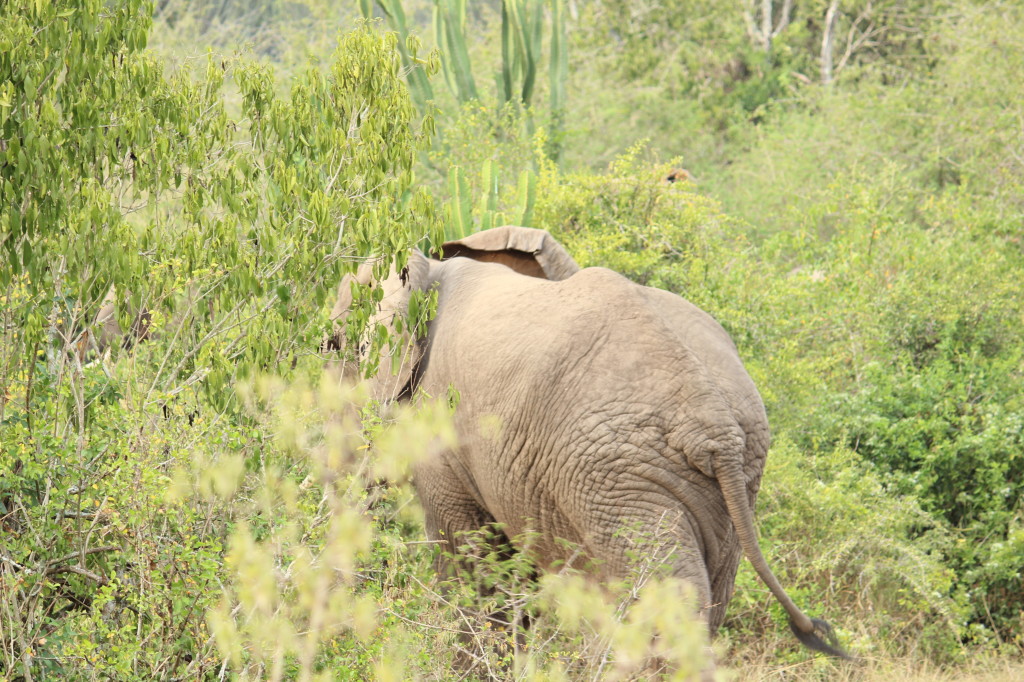Today was a driving day since we had to get from Gisenyi, Rwanda, to Lake Albert in Uganda, where we’d be spending two nights at the Mweya Safari Lodge. The drive took 10 hours and ate up the entire day, not including an hour stop for lunch and the border crossing (45 minutes).
The Ugandan countryside was mountainous, like Rwanda, in the beginning but as we started getting down into the valley the vegetation and scenery began to change to more of the savannah feel.
Robert shared with us some of the history. Uganda was a former British colony, and, unlike Rwanda, they drive on the left side of the road. In 1962 they gained independence and the King of Baganda, Edward Muteesa II, became the first President of Uganda (United Ganda), with an Acholi as the Prime Minister, Milton Obote. Obote was a cunning politician and manipulated the constitution to give empower the PM role more than the President, thereby relegating the President’s role to more of a figurehead. As they became more embroiled, Obote, allied with the UPC, weakened the role of President so much that eventually he saw his chance to overthrow the government, launching a coup. The former President fled, dressed as a nun (with the help of the archbishop) into Rwanda and eventually into Britain. Years later, Obote enlisted a dragon lady to get close to the former President while he was living in London. She gained access to his inner circle and trust. On the night of his birthday, she slipped poison in his glass and murdered him.
Obote of course immediately enriched the power of the Presidency and weakened the role of the PM, now that he was President. Meanwhile, things came full circle for Obote. The public sentiment began to turn against him, and his general, Idi Amin, similarly staged a coup in 1971.
A movie was made of Amin starring Forrest Whitaker, called “The Last King of Scotland.” Idi Amin was a populist and initially had a broad base of public support, with the slogan “Africa for Africans.” He exiled non-African residents of the country, like the Indians. Many of the ones that stayed were murdered, including the father of one of Leslie’s friends (incidentally, the safari lodge we’re staying in now is Indian owned). As his regime wore on, he became increasingly more paranoid and eventually went mad (although Robert things he wasn’t really mad, just paranoid about trusting his inner circle, stemming from the fact that he was illiterate). He became a brutal tyrant, storing body parts of his rivals in his refrigerator, and occasionally eating them. However, he remained very popular with the people.
Obote, exiled in Tanzania, fought in the bush for several years until 1979, when he, with the help of Tanzanian support and Ugandan rebels, was able to overthrow Amin. Amin was exiled to Saudi Arabia (he was a Muslim). This led to the return of Obote, from, 1979-198, who was deposed again in 1985 by General Tito Okello. He only lasted 6 months, when ultimately, he was overthrown by Yoweri Museveni, an Ankole, who had also helped overthrow Amin.
Musaveni is still President today, and he changed the constitution to allow additional terms so he could continue to run for reelection.
Leslie says “welcome to African politics.”
This occupied the better part of the day until we began an evening safari drive on the way to our hotel where we saw some elephants, baboons, Guinea fowl, buffalo, warthogs, antelope, and a leopard.
The next day we would begin our real safari adventure.











One response to “Day 6 – Gisenyi to Queen Elizabeth National Park, Uganda”
Nice history account and lovely pictures of the animals